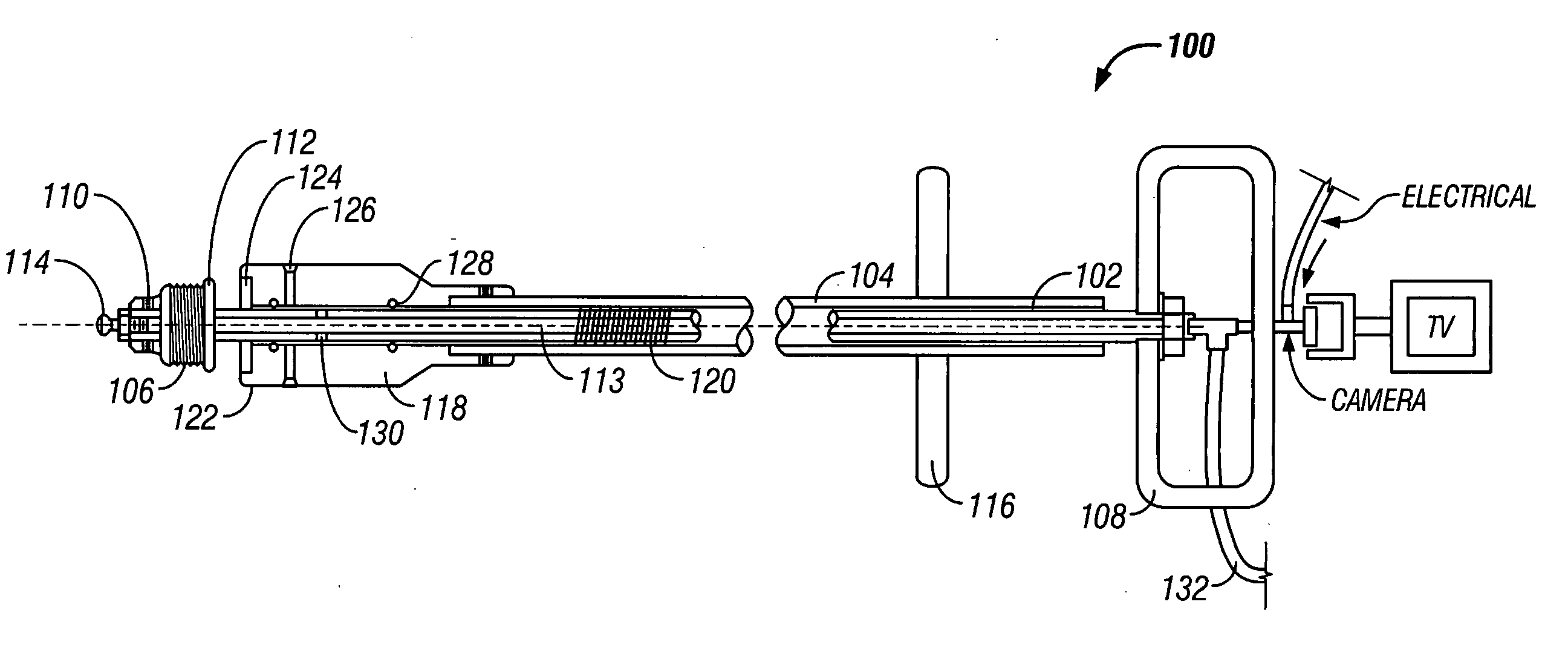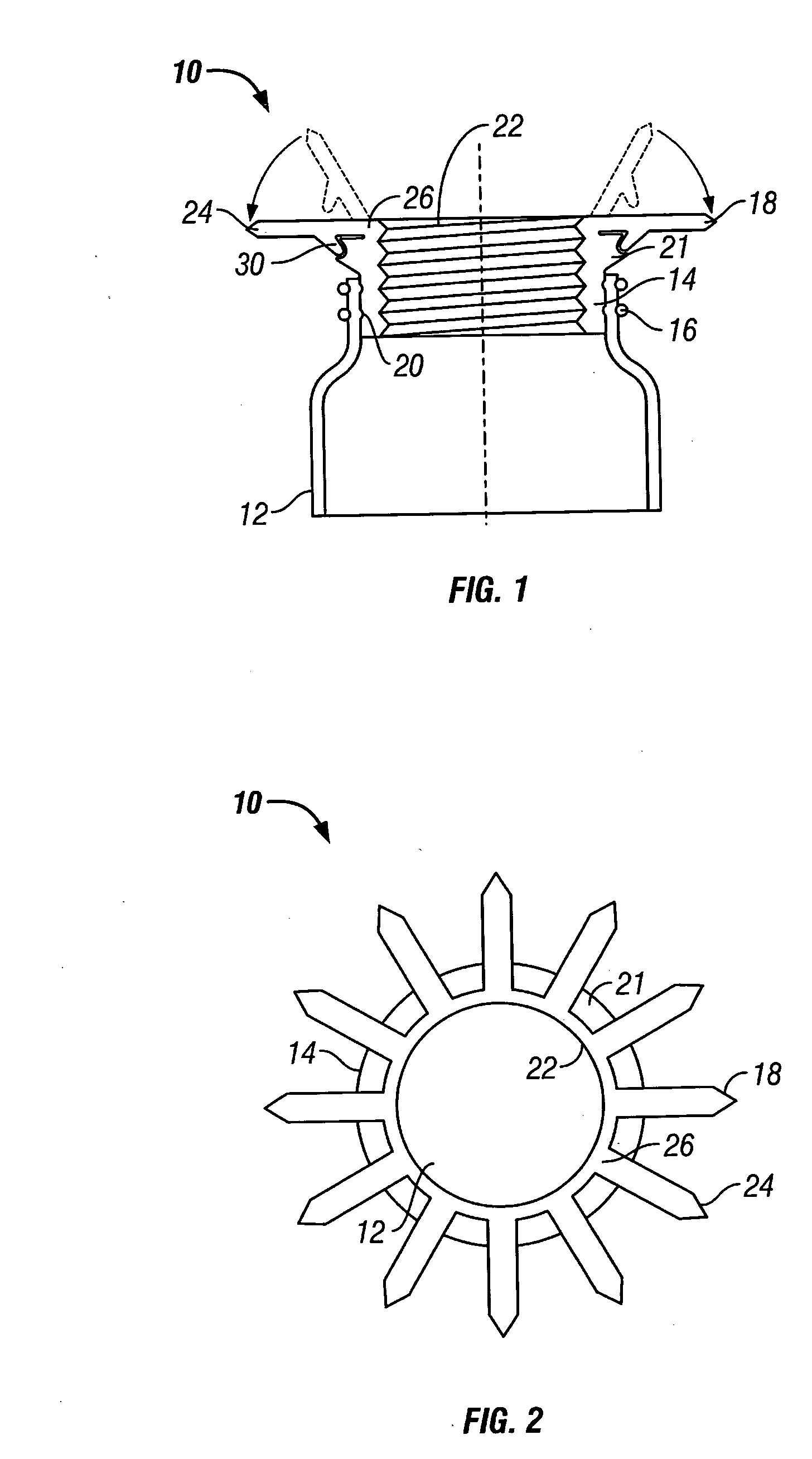Perorally removeable anti-reflux valve implantation
a valve and valve body technology, applied in the field of anti-reflux valve prosthesis, can solve the problems of esophageal cancer, esophageal lining change, and medication-based therapies are not always fully effective,
- Summary
- Abstract
- Description
- Claims
- Application Information
AI Technical Summary
Benefits of technology
Problems solved by technology
Method used
Image
Examples
Embodiment Construction
[0049] As exemplified by the figures wherein like numerals refer to like parts, the present invention provides a peroral prosthesis system for treatment of gastroesophageal reflux disease (GERD) in a patient comprising an anti-reflux valve prosthesis, a peroral implantation tool for perorally inserting and positioning the valve prosthesis at the distal end of the lumen of the esophagus and implanting or fixing the valve prosthesis to the lumen wall, and a peroral extraction tool for removing the prosthesis.
[0050] Referring to FIGS. 1-2, in a preferred embodiment, the present invention provides a valve prosthesis 10 comprising a valve 12, preferably of the sleeve type, depending from an annular body 14. The sleeve valve 12 is made of a tubular membrane such as a tube of silicone, latex, polyester, or preferably GORE-TEX or TEADIT fluoropolymer, and has an upper end having a circular cross-section for mounting to the annular body 14 via rings 16, which can be made of a suitably inert...
PUM
 Login to View More
Login to View More Abstract
Description
Claims
Application Information
 Login to View More
Login to View More - R&D
- Intellectual Property
- Life Sciences
- Materials
- Tech Scout
- Unparalleled Data Quality
- Higher Quality Content
- 60% Fewer Hallucinations
Browse by: Latest US Patents, China's latest patents, Technical Efficacy Thesaurus, Application Domain, Technology Topic, Popular Technical Reports.
© 2025 PatSnap. All rights reserved.Legal|Privacy policy|Modern Slavery Act Transparency Statement|Sitemap|About US| Contact US: help@patsnap.com



